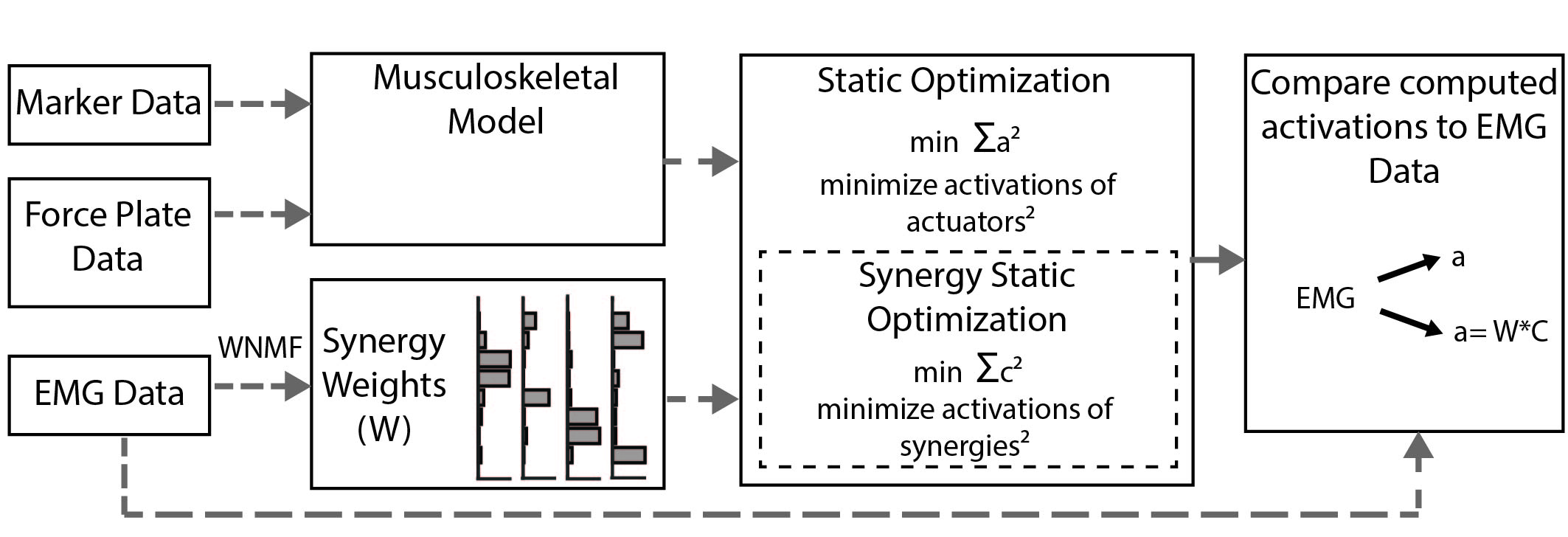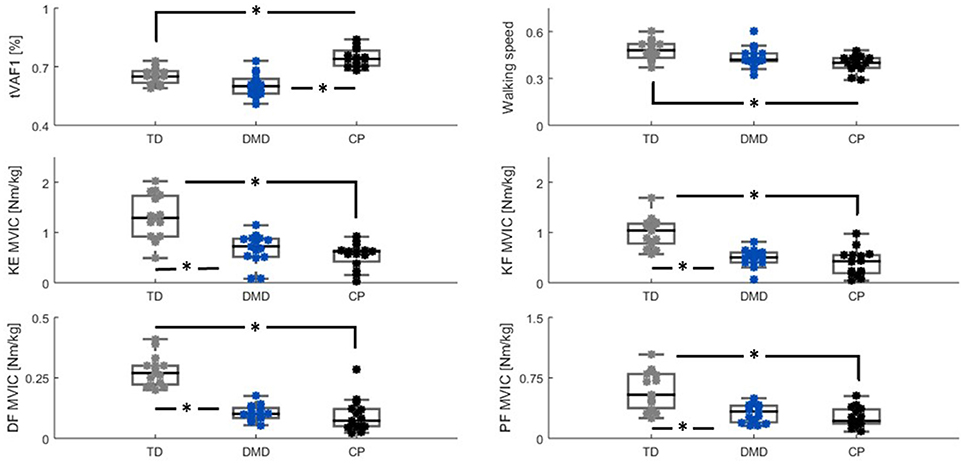Journal Article in Frontiers of Neurorobotics:
This study demonstrated that muscle activations estimated from static optimization using generic musculoskeletal modeling does not accurately predict EMG profiles for children with CP or TD peers. Constraining activation patterns to experimentally measured synergies increased estimated muscle stresses, but did not improve the estimation of muscle activations for either group.

Background
Neuromusculoskeletal simulation provides a promising platform to inform the design of assistive devices or inform rehabilitation. For these applications, a simulation must be able to accurately represent the person of interest, such as an individual with a neurologic injury. If a simulation fails to predict how an individual recruits and coordinates their muscles during movement, it will have limited utility for informing design or rehabilitation. While inverse dynamic simulations have previously been used to evaluate anticipated responses from interventions, like orthopaedic surgery or orthoses, they frequently struggle to accurately estimate muscle activations, even for tasks like walking. The simulated muscle activity often fails to represent experimentally measured muscle activity from electromyographic (EMG) recordings. Research has theorized that the nervous system may simplify the range of possible activations used during dynamic tasks, by constraining activations to weighted groups of muscles, referred to as muscle synergies. Synergies are altered after neurological injury, such as stroke or cerebral palsy (CP), and may provide a method for improving subject-specific models of neuromuscular control.
Purpose
The aim of this study was to test whether constraining simulation to synergies could improve estimated muscle activations compared to EMG data.
Method
We evaluated modeled muscle activations during gait for six typically developing children (TD) and six children with CP. Muscle activations were estimated with: 1) static optimization (SO), minimizing muscle activations squared, and 2) synergy static optimization (SynSO), minimizing synergy activations squared using the weights identified from EMG data for 2-5 synergies.
Results
While SynSO caused changes in estimated activations compared to SO, the correlation to EMG data was not higher in SynSO than SO for either TD or CP groups . The correlations to EMG were higher in CP than TD for both SO (CP: 0.48, TD: 0.36) and SynSO (CP: 0.46, TD: 0.26 for 5 synergies). Constraining activations to SynSO caused the simulated muscle stress to increase compared to SO for all individuals, causing a 157% increase with two synergies.
Conclusions
These results suggest that constraining simulated activations in inverse dynamic simulations to subject-specific synergies alone does not improve estimation of muscle activations during gait for generic musculoskeletal models.

